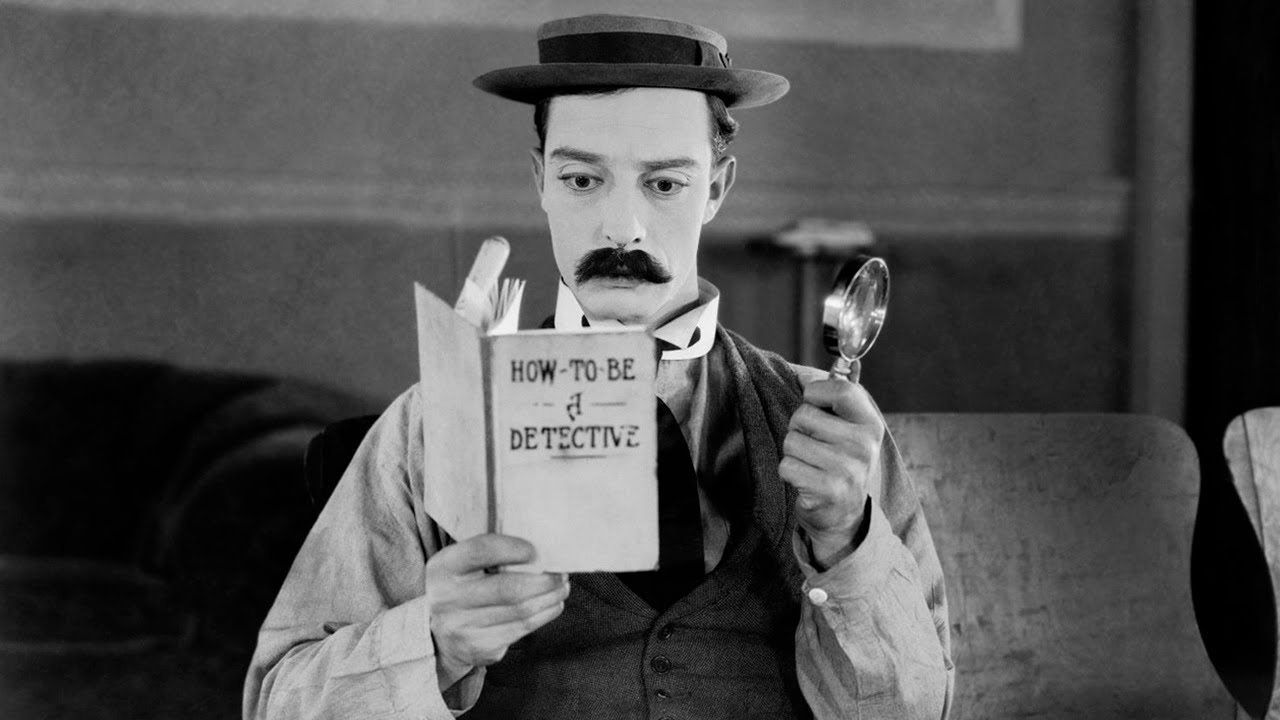Create
Silent Keaton classic to be screened at Imagine Museum
Movie historian Christopher Ward will introduce 1924’s ‘Sherlock Jr.’ Tuesday.

The 1924 silent comedy Sherlock Jr. is revered by film buffs, not only for Buster Keaton’s nonstop physical antics and sight gags, but for Keaton-the-director’s innovative use of then-new moviemaking techniques such as film-within-a-film, magical realism and creating the illusion that the impossible can actually be possible.
The 45-minute film, with score added later, is being screened Tuesday at 6 p.m. at the Imagine Museum, and introduced by St. Pete film historian Christopher Ward.
A “professor of practice” at the University of Tampa, Ward is an entertainment business veteran who has written and produced for film and television for many years.

Christopher Ward.
He won a regional Emmy Award (in Cincinnatti) in the 1980s, an was a consulting producer on the HBO documentary The Loving Story in 2011, for which he received a second Emmy. His documentary Outwitting Hitler is currently available on Amazon Prime.
At UT, Ward has taught film producing, animation, writing, directing and other production courses, as well as film and TV history.
He and his wife moved to St. Pete five years ago, weary of the New York area winters.
“Last year, the Imagine Museum had a Charlie Chaplin film (The Rink) that they asked me to introduce,” Ward explained. “And I was happy to.
“And I told them, you know, there are so many great silent films. Sherlock Jr. by Buster Keaton is absolutely mind-blowing, phenomenal … and I would love to do that.”
Which brings us up to date.
Today, Stone-faced Keaton’s brilliance, wrote the Hollywood Reporter, outshines that of his contemporaries Chaplin or Harold Lloyd: “In the trinity of the great silent comedians, Buster Keaton has traveled into our own realm without a trace of mileage.” The writer continued: “Part acrobat, part ballet artist, he battled against meteorology, the laws of physics, and fate.”
“Buster Keaton grew up in a vaudeville family,” Ward said. “So he was an onstage performer. He grew up learning how to be a very physical comedian, doing all sorts of pratfalls. Of course, they all did their own stunts back then.
“Keaton got into film work and became a star. But he was also interested in working behind the camera. So he directed a lot of his own films, brought in writers and wrote, and co-wrote with them.”
Although his career did not survive the advent of sound films, many of his films are considered genre classics.
“This particular film, it starts off in a conventional way,” Ward explained. “Like most silent comedies, it has a thin plot, it’s got a lot of sight gags, a lot of fun, silly things.
“And then when you get into the second act, the film makes this extraordinary change. At the time, in the 1920s, Surrealism was all the rage. And Keaton brought Surrealism into the film. There are several just extraordinary sequences that demonstrate this.”

About halfway through Sherlock Jr., Keaton’s character, a movie-house projectionist, falls asleep on the job … and subsequently leaps into the scene on the screen, interacting with the celluloid actors. Thus begins a breathless dream sequence adventure.
During the filming of a particular stunt – watch for it, it involves a water tower – Keaton actually broke a vertebrae in his neck. But he kept on shooting, and within hours began complaining of severe headaches. He finished the movie anyway; the injury wasn’t diagnosed until 1935.
For Ward, Sherlock Jr. is a cinematic treasure trove. “Obviously,” he noted, “a good part of the movie is shot in a studio – but there are many scenes shot exterior, in the city of Los Angeles, and partly in Southern California.
“And you can see what it looked like 100 years ago. They’re driving down the streets, and you can see how undeveloped the neighborhoods are.”
Ward, who has screened and discussed this film in other locations, enjoys watching audiences react to its abrupt transition into Surrealist comedy. “They’re watching the beginning thinking ‘OK, this is funny … this is silly,’ and then there’s a point where they’re like ‘Whoa!’
“It’s a wonderful film. It still gets laughs, a hundred years later.”
Find tickets for Tuesday’s event at this link.







